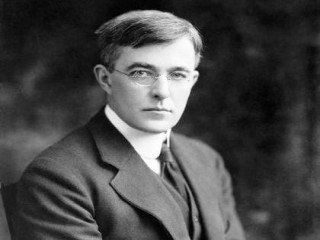
Irving Langmuir biography
Date of birth : 1881-01-31
Date of death : 1957-08-16
Birthplace : Brooklyn, New York, United States
Nationality : American
Category : Science and Technology
Last modified : 2011-06-29
Credited as : Chemist and physicist, Nobel Prize in Chemistry, Inventor of the high-vacuum tube
Irving Langmuir was born in Brooklyn, N. Y., where his father was in the insurance business. When he was 11 years old, his family moved to France, where he attended elementary school for a time. In 1895 he returned to the United States and attended high school in New York City. In 1903 he took a degree in metallurgical engineering from the Columbia University School of Mines. Like many scientists of his generation, he went to Germany for postgraduate work; he took a doctorate from the University of Gottingen in 1906. Returning to the United States, he became an instructor of chemistry at the Stevens Institute of Technology in New Jersey.
In 1909 Langmuir went to work for the General Electric Company in Schenectady, N. Y. He remained there until his retirement in 1950 and continued as a consultant until his death in 1957. General Electric was one of the first large manufacturing firms in the United States to invest in industrial research, and Langmuir soon became one of the laboratory's brightest stars. Indeed, an associate once said of him, "Langmuir is the nearest thing to a thinking machine that I know—you put in the facts and out roll the conclusions." However, he was also an energetic hiker and mountain climber, as well as an enthusiastic private pilot.
During his years at General Electric, Langmuir was responsible for the research that led to the gas-filled incandescent lamp, the high-vacuum power tube, and atomic hydrogen welding, among other advances. He worked for many years on electron emissions and gaseous discharges, and he also developed experimental techniques for the study of proteins that were widely copied by biochemists and biophysicists. His most famous research dealt with oil films on water and opened up the new field of surface chemistry. In 1932 he was awarded the Nobel Prize in chemistry. As a result of his work for the military during and after World War II, he supported the idea of weather modification by seeding clouds with dry ice or silver iodide to produce rain and snow.
















